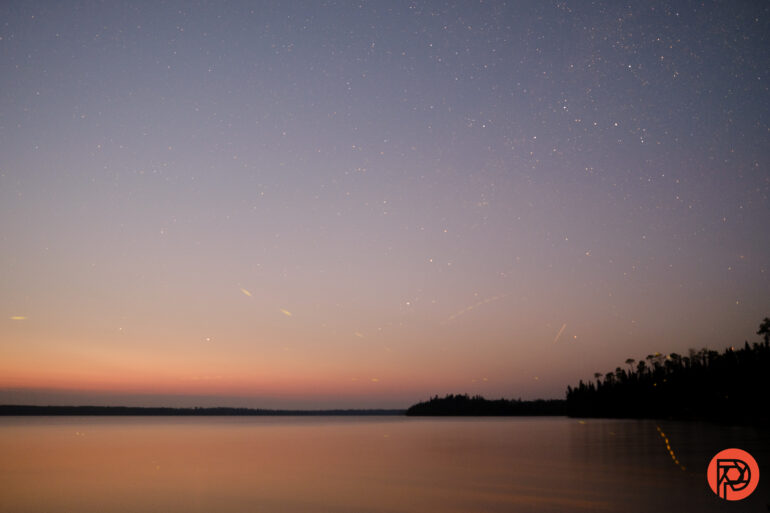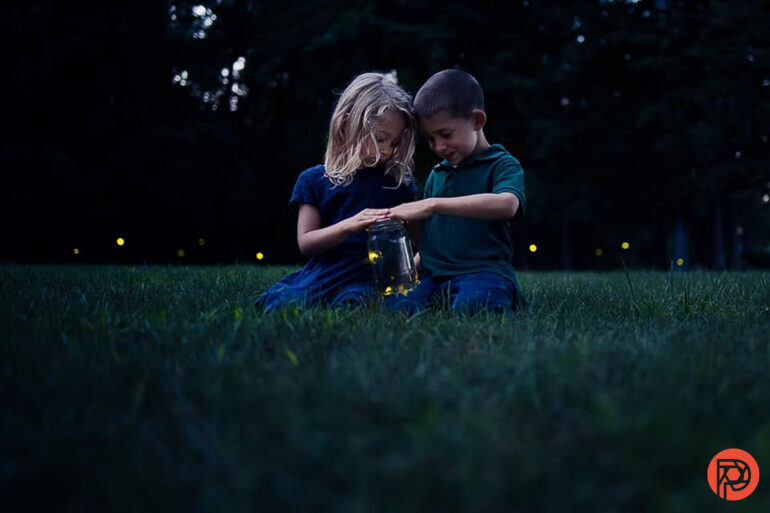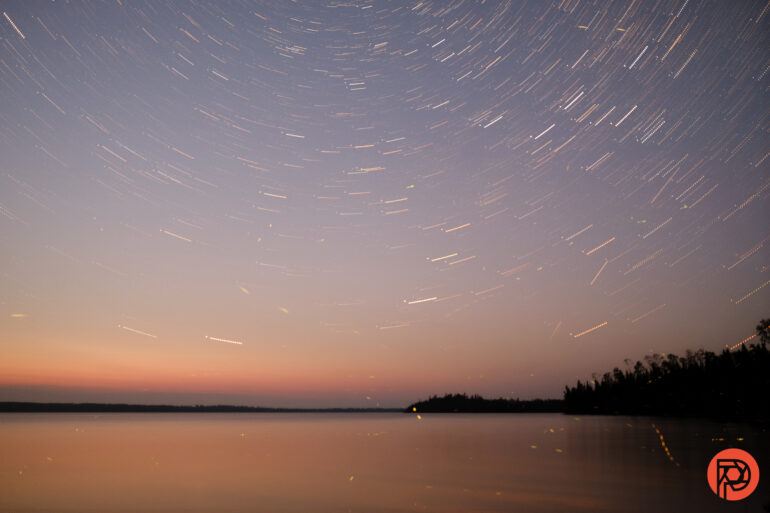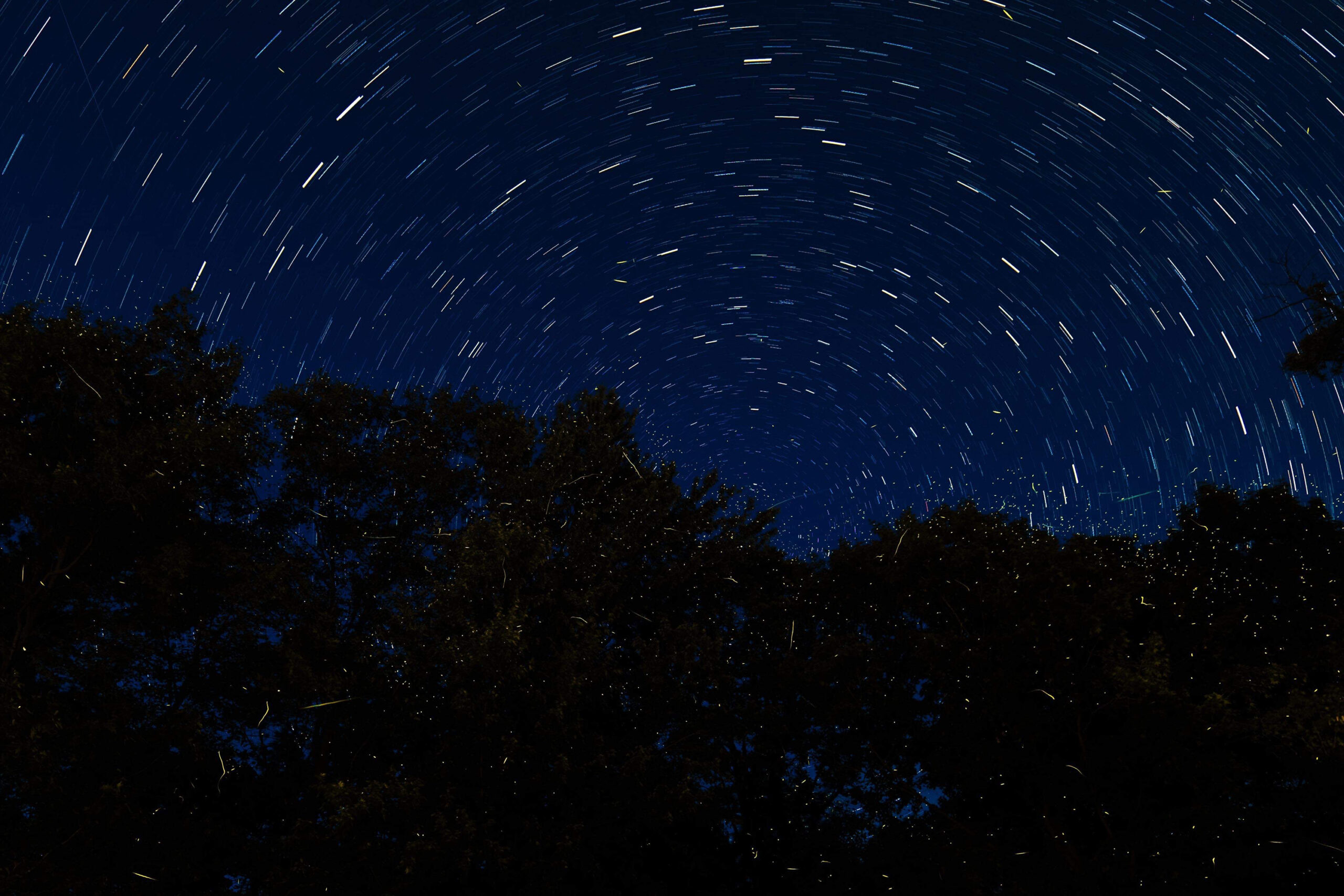The most magical summer days end with the warm glow of fireflies dancing in the air. Of course, lightning bugs are less magical when you think that those bioluminescent butts are just flirtatious beetles, some of whom will actually eat their mate. But I digress. Fireflies remind me of childhood summers and the privilege of staying up late to run around with a Mason jar — which means I’ve always had this itch to learn how to photograph lightning bugs.
But, as brief flashes of light, fireflies are challenging to photograph. When I first attempted to photograph lightning bugs, I treated the little light-up beetles as If I was photographing the stars. But I was only half right. As I’ve worked more and more to capture these fairy-tale-like bugs, I’ve learned that there are a few tricks to capturing them on camera.
Here’s how to photograph lightning bugs.
Table of Contents
What you’ll need
The gear list for photographing fireflies is quite similar to photographing the stars. You’ll need:
- A tripod
- A camera with battery and memory card
- A wide-angle, wide-aperture lens
- Optional: A camera equipped with Live Composite from Olympus or Panasonic, or some Photoshop and a little bit of time on your hands
1. Observe the lightning bugs.
Sometimes, the first step to a good photo is not to take any photos. Don’t just jump into shooting — start by observing. Where are the fireflies concentrated at the most? Often, if I start with a big idea instead of observing what’s going on around me, I lose out on the best shots. For example, suppose I have this big idea in my mind about photographing the fireflies over the lake. In that case, I miss the fact that there are relatively few fireflies over the water, and most of them are concentrated around the open, grassy areas. Be sure to put the camera down long enough to observe throughout the night — which is how I realized that the fireflies started out in the grass but ended up in the tops of the trees where they could be photographed with the stars.
2. Set up a tripod.
Once you’ve figured out where the lightning bugs are and how you want to compose the shot, set up a tripod. You’ll be using long exposure techniques, so a tripod is a must-have.
3. Set the shutter speed.

The shutter speed is essential to photographing fireflies. When I first attempted to photograph lightning bugs, I dialed in the same settings I would use to photograph the stars, with a shutter speed of around 20 seconds. The problem is the light from a firefly is often much shorter than that. If your exposure is too long, those bioluminescent butts don’t always appear in the image. Occasionally, you can get lucky and have lightning bugs show up in a 20-second exposure, but I typically get the most lights in a shorter exposure.
Instead, the shutter speed should be matched more closely to the length of the firefly flashes, typically between two and ten seconds. A shorter shutter speed will show those fireflies as dots of light. A longer shutter speed will show lines of light if the bug is in flight during the image.
4. Balance the exposure with aperture and ISO.
Once the shutter speed is dialed in, balance out your exposure by setting the appropriate aperture and ISO for the scene, which will vary based on your gear and the amount of light in the scene. Often, shooting a wide-open aperture is necessary. But, if you want more of the image in focus, you can narrow the aperture down a bit and use a higher ISO instead.
5. Manually set the focus.

Often, the camera’s autofocus doesn’t work so great at dusk. If your camera can focus on the subject, great! Focus on the subject, then flip the switch to manual so the camera doesn’t try to refocus again and delay your shot.
Most will need to use manual focus. If you have a specific subject in mind, manually focus there. If you’re going for a wide landscape of fireflies, set the focus to infinity, similar to how you would photograph the stars.
6. Take the shot — then take some more.
The perfectly-timed firefly photo is often a mix of skill — and total luck. Take several shots as the fireflies move around, keeping the camera in the same position on the tripod. This will either increase your odds of getting a great firefly photo in one shot, or set you up for the optional next step.

7. Optional: Use compositing — or Live Composite on Panasonic and Olympus cameras.
Because the fireflies don’t all flash at the same exact time, chances are your photograph doesn’t have the same number of fireflies as the real scene did. Many of the firefly photos that you see on the internet are actually composites or multiple images meshed together.
Is it possible to get a good firefly photo in one image? Sure, but expect only a handful of the fireflies chatting with their light-up butts to show up in the image. For more, you’ll need to create a composite.
To create a composite in Photoshop, go to File > Scripts > Load Files into Stack and select your series of images. Once the photos are loaded into one file, you’ll select all the layers simultaneously, then change the blend mode to lighten. This allows only the lightest parts of the image to show through, which, in this case, are those fireflies. The resulting file will show all the fireflies that lit up during the range that your photos were taken.
However, my favorite way to photograph fireflies is using Live Composite. Live Composite essentially takes the Photoshop process that I just mentioned above and does it all inside the camera, no computer needed. Only certain Panasonic and OM System cameras have this mode. If you are one of the lucky few, use the same settings from above, only before you press the shutter release, head into the camera menu and set up a Live Composite instead. You can find more detailed instructions on using Live Composite for Panasonic here or OM System/Olympus here.


